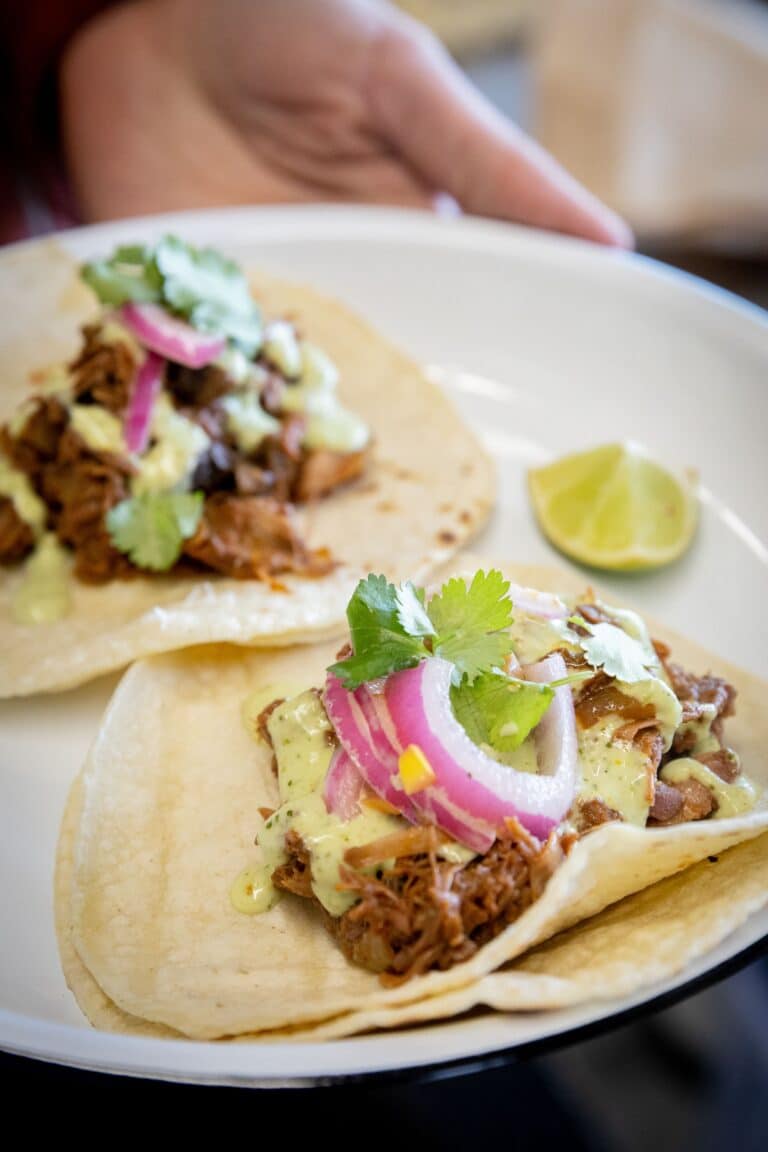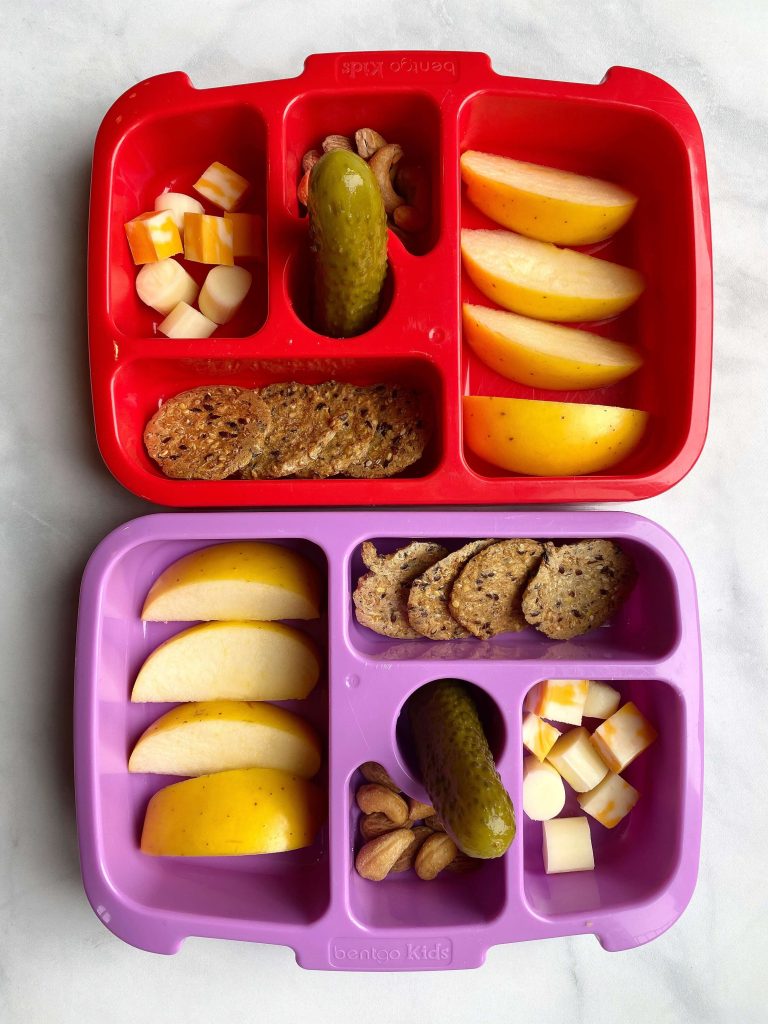From the Dietitian: Bone Broth 101
Have you heard of bone broth yet?
To be honest, when I first heard this term years ago, I was confused. Was bone broth the same as the chicken stock I make at home with the leftover carcass for chicken soup?
Why was I suddenly seeing it housed in fancy jars and selling for over twice the price of regular chicken broth at the store?
This trendy food is especially popular amongst those who are health conscious or trying to support their immunity when sick.
But what IS bone broth exactly? And is bone broth really all it’s nutritionally cracked up to be? Let’s dive in!
Stock vs Broth
First let’s talk about the difference between stock and broth.
Stock is made from bones and connective tissues, water and mirepoix (the classic, even mixture of onions, celery and carrots). This combination typically simmers for 12-24 hours so that it can draw the flavor and collagen from the bones.
Once the stock has been strained and chilled, it’s usually a jiggly texture similar to Jello, due to the rich amount of collagen.
Stock is always cooked with BONES, but not necessarily meat. There is also vegetarian stock which uses vegetables in place of bones.
Broth is made from cooking meat in water, but it may or may not contain bones. This liquid is usually thinner than stock and not jiggly. It sometimes has additional vegetables, herbs or spices infused for added flavor.
Simply put: Bone broth is essentially stock that is very thick and rich in collagen. It’s made the same way – by simmering the bones, including marrow and connective tissue of an animal in water for a long period of time in order to break down and extract the nutrients for the health benefits.
Photo by Kathryn Bradley of Kathryn Bradley Photography
The Evidence
Is sipping bone broth going to give you the nutrition super boost we’ve heard whispers about?
Some health “experts” have claimed bone broth is a magical elixir for gut health, glowing skin, stronger immunity and more.
However, there is little evidenced-based research about the true health benefits of bone broth specifically.
The studies simply aren’t there. But the good news is we know real bone broth contains many healthy nutrients, so by sipping this trendy liquid (that’s always been around…) it certainly can’t hurt us!
A Deeper Look
Here is the nutritional scoop on bone broth:
- The nutritional content varies greatly depending on the ingredients used to prepare the broth.
- Bones and cartilage contain two specific amino acids that support collagen production (glycine and arginine), both of which are also anti-inflammatory.
- Calcium, potassium, magnesium and phosphorus are also found in bone broth since it comes directly from bone.
- These are the same nutrients we need to grow our own bones. Eating these minerals in rich bone broth sounds like a win to me!
- You may support joint health by consuming bone broth full of glucosamine and chondroitin, found naturally in the cartilage.
- Bone broth is like a protein “soup” containing the amino acids we need for building and repairing muscle, supporting the growth of our hair, skin, nails and even blood cells.
- One cup of bone broth contains around 45-60 calories and 8-11 grams of protein!
- Compare this to regular boxed or canned chicken/beef “broth” with 10 calories and only two grams of protein per cup.
- True bone broth contains much more protein and is calorie-dense.
- Since protein helps with our fullness, or satiety, eating bone-broth-based soups may be heartier and more filling.
Easy Recipe for Homemade Chicken Bone Broth
From Eat Move Thrive Spokane
Ingredients
- Bones and carcass of 1 chicken (leftover, whole-roasted chicken is my favorite, but can also be a whole, raw chicken)
- About 10-12 cups of water
- 1 or 2 tablespoons apple cider vinegar
- 1 teaspoon sea salt, plus more to taste (I’d suggest starting with less so you don’t oversalt it)
- Optional: fresh herbs such as thyme, rosemary or tarragon, fresh lemon slices, fresh ground pepper
Instructions for Homemade Chicken Bone Broth

Step 1: Add the bones and carcass of chicken to a large *stock pot or *dutch oven. Be sure to include all the bits – wings, skin, leftover meat, etc.
Step 2: Fill the pot with water, around 10-12 cusps, until the entire carcass is covered. Use more if needed.
Step 3: Add sea salt, herbs, lemon and pepper (If using. Remember, these are optional).
Step 4: Next, add the apple cider vinegar. The acidity helps break down the collagen and make it rich with protein.
Step 5: Bring pot to a boil. Once boiling, adjust heat down to low and simmer covered with a lid for 10-12 hours or up to 24 hours total.
- The longer the broth simmers, the more it will reduce and enrich the broth with collagen.
Step 6: Throughout the cooking process, taste the broth and adjust the salt, spices and pepper as needed.
Step 7: Once it’s reduced, turn heat OFF and allow broth to cool slightly. Then strain out the bones/carcass using a fine mesh strainer.
Step 8: The bone broth can be used right away or cooled completely in the fridge before preserving in freezable containers. Be sure to leave some room for expansion when freezing broth-it tends to grow a bit!
*Can also make this in a slow cooker. Set to HIGH for the first two hours and adjust to LOW for another 6-20 plus hours.*
Other uses and where to buy
Other ways to use bone broth at home: Cook rice, pasta or any whole grain in bone broth instead of water, use it in place of some oil or butter when sautéing vegetables, add to pureed foods, and of course, as a base for soups, stews and other sauces.
If you want to use bone broth, but would rather buy your bone broth than make it, look for these reputable brands (several quality options covering a wide price range) or ask around at local restaurants/markets for homemade stuff!
Whether you have accidentally been making trendy bone broth for a lifetime, or this concept is new to you, give it a try this season. Your body and belly will thank you!
Monika Jacobson
After growing up in the Inland Northwest, Monika Jacobson earned her Bachelor’s degree in Human Nutrition and Dietetics at Washington State University. She moved to the west side and worked as a Registered Dietitian Nutritionist in a myriad of settings–from luxury health clubs, to coaching athletes with sports nutrition, to home health clinical nutrition and various start-ups in Seattle-focused scientific wellness and genetics. After moving to Spokane with her family, she created Eat Move Thrive-Spokane because she wanted to transform people’s lives by teaching them how to make healthy food taste good. At Eat Move Thrive-Spokane, Monika teaches adult and kid cooking classes (online and in-person) and coaches clients one-on-one with their wellness goals centered on nutrition. She discusses how stress, sleep, hormones, and overall mental health affect the decisions we make about food.











